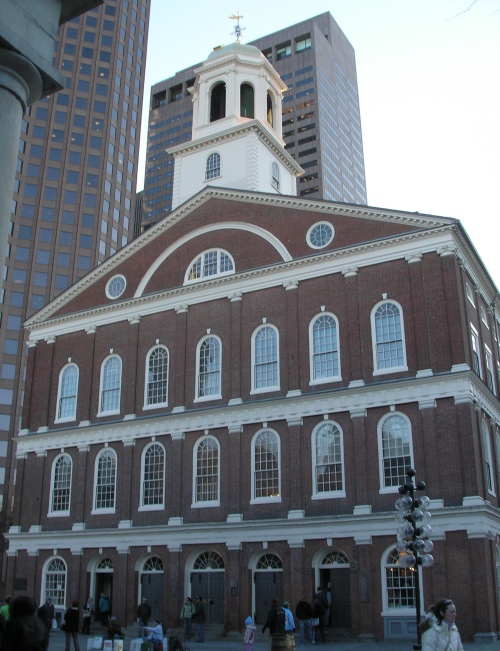Faneuil Hall (1742)

Peter Faneuil was a Boston merchant whose parents were Huguenots. In 1740, he proposed donating a market building to the town, with a marketplace below and a public meeting hall above. The original Faneuil Hall, completed in 1742, was designed by the Scottish artist John Smibert. After the building suffered in a fire in 1761, it was rebuilt the following year. The building now entered the period when it would become known as “The Cradle of Liberty.” James Otis dedicated the meeting room to the “Cause of Liberty” and it was here that the many important gatherings protesting British taxes on the colonies were held, under the leadership of such patriots as Samuel Adams and John Hancock. After the Boston Tea Party, the British closed the building to public meetings and it was used to garrison soldiers.
After the Revolutionary War, Faneuil Hall was rebuilt and enlarged in 1806 by Charles Bulfinch, who retained its colonial style, but increased its width, added a third floor and enclosed the ground floor’s open market arcades. He also added galleries to the meeting hall, which, as Peter Faneuil had requested, has continued to be used for public forums. Over the years it has heard abolitionists, suffragists and political candidates. The third floor, now a museum, is the armory of the Ancient and Honorable Artillery Company of Massachusetts, the oldest military organization in the United States which has had its headquarters in Faneuil Hall since 1746. Faneuil Hall also has a distinctive copper gilt Grasshopper weather vane, made by the artisan Shem Drowne. It was stolen, but found a few days later in 1974. In 1898-1899, the building was rebuilt using noncombustible materials. Faneuil Hall, together with the neighboring Quincy Market, is now part of the Faneuil Hall Marketplace. It is also on Boston’s Freedom Trail.